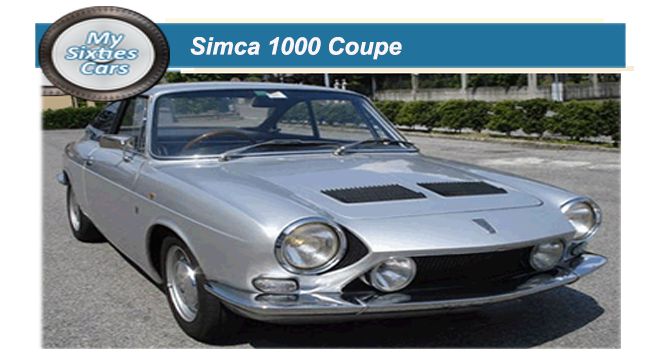
The Simca Coupé 1000 and its successor, the Simca 1200S are small, rear-engined two-door coupés.
Never quite finding their niche, the Simca 1000 and 1200 Coupés were once described by a particularly cynical member of the French motoring press at the time of the 1000’s launch as “pseudo-sportive”.
 The 1000 Coupe was a natural follow on to the 1000 saloon, launched in France in October 1961 which rapidly became an outstanding success in the domestic market and across Western Europe.
The 1000 Coupe was a natural follow on to the 1000 saloon, launched in France in October 1961 which rapidly became an outstanding success in the domestic market and across Western Europe.
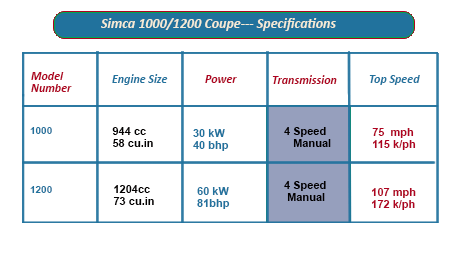
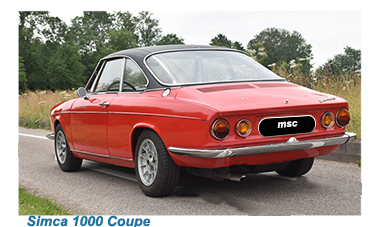 Henri Pigozzi, founder and President of Simca, was still very active in the day to day running of the company, even though he was, by then, in his early Seventies.
Henri Pigozzi, founder and President of Simca, was still very active in the day to day running of the company, even though he was, by then, in his early Seventies.
The 1000 Coupe was, without doubt, Pigozzi’s pet project, and ultimately the last he would ever be involved in.
Pigozzi apparently did have strong feeling that he was developing a model that would likely to be a record breaker as far as sales were concerned, and worthy of the investment by improving Simca’s notoriously dowdy image.
With the 1000 coupe, Pigozzi showed that his logistical skills were still very sharp, by putting together a package for Turin based coachbuilders Bertone to both design and produce the new model.
The design was handled in-house by Bertone through a talented young designer by the name of Giorgetto Giugiaro.
Giugiarowas handed the brief on the strict condition that the model be ready for launch at the Geneva Motor Show to be held early 1962.
![]()
The next part of the Bertone/Simca cooperation was where logistics played a role, with the 1000 coupe bodies produced in Turin by Bertone and then transferred for final assembly to Simca’s Poissy plant on specially configured trains- a distance of just over 800 kilometers.
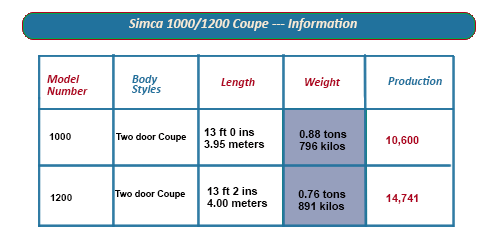 When the Simca 1000 coupe did make its debut at Geneva, interest was indeed high, and critical appraisal was readily forthcoming.
When the Simca 1000 coupe did make its debut at Geneva, interest was indeed high, and critical appraisal was readily forthcoming.
Combinations of bureaucratic and production problems caued the 1000 coupe to not arrive at Simca’s distributors for several months after its succesful launch.
By that time all the initial interest that Simca had worked so hard to generate had gotten considerably cooler.
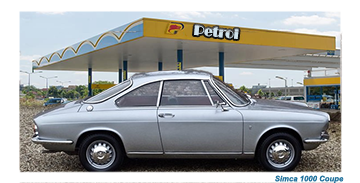 As the first few models hit the streets of Europe that lukewarm reaction got even cooler, as the public began to gradually discover that the 1000 coupe’s standard 944 cc engine was decidedly underpowered.
As the first few models hit the streets of Europe that lukewarm reaction got even cooler, as the public began to gradually discover that the 1000 coupe’s standard 944 cc engine was decidedly underpowered.
On the upside, Bertone had done such an excellent job in designing the rear-engined coupe, using the almost identical chassis and mechanical elements used on the saloon, road holding was considerably improved, thanks to vastly improved aerodynamics.
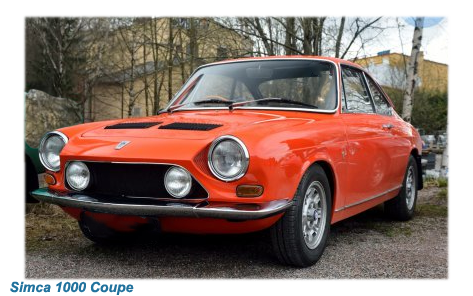 Henri Pigozzi was reportedly philosophical about the 1000 coupe’s possible shortcomings having achieved his goal of launching a semi-sports coupe for the “middle classes.”
Henri Pigozzi was reportedly philosophical about the 1000 coupe’s possible shortcomings having achieved his goal of launching a semi-sports coupe for the “middle classes.”
Despite that sales for the model were disappointing, even less than Simca’s modest expectations.
When Simca went through a change of ownership during the mid-Sixties, with Henri Pigozzi stepping down, the 1000 coupe seemed to slip under the radar, with sales trickling in at a dangerously low level, especially in the face of intense competition, in particular from Fiat with their 850 coupe.
Eventually, Simca’s dynamic new chairman Georges Herein turned his considerable talents and energy in giving the 1000 coupe a bit of a shakeup.
Herein’s first step was to fit the coupe with a more powerful 1200 cc engine as well as authorising some major styling adjustments including repositioning that car’s radiator to the front of the car, meaning that weight distribution and overall handling was dramatically improved.
![]()
Much more thought had been given to designing the 1200 coupe’s interior than had been given to the 1000s, both saloon and coupe, although it was very far from being the most comfortable car on the road, especially for those in the back seat.
The Simca 1200 coupe was almost identical to the 1000 externally, apart from having its front end redesigned, to accommodate the radiator.
Apart from that, external changes were entirely superficial with the exception of a pair of attractive grills that had been added to the top of the bonnet to improve air circulation.
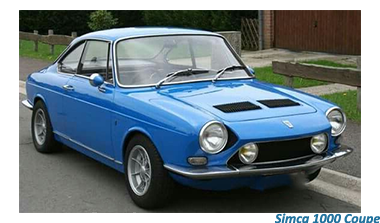 For the next five years, while the Simca 1200s remained in production, reactions were mixed with the car earning titles ranging from a “Poor man’s Porsche” to such derogatory descriptions as an “economy car in drag” or “ a sheep in wolves clothing.”
For the next five years, while the Simca 1200s remained in production, reactions were mixed with the car earning titles ranging from a “Poor man’s Porsche” to such derogatory descriptions as an “economy car in drag” or “ a sheep in wolves clothing.”
Whatever the motoring press thought of the 1200s, new owners Chrysler were far from impressed, with sales failing to take off.
Chrysler wound up production of the 1200S coupe in 1972, with combined sales of both models failing to have passed 25,000 during its ten-year production run.





